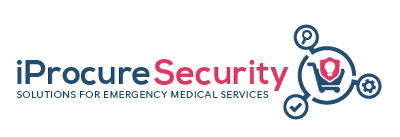480Terms
Help to improve our database
We are continuously collecting common terms used by the Emergency Medical Services practitioners across Europe. Help us improve our content and fill out the online form. If you are not able to find what you are looking for, please let us know by sending us a message through our contact page.
Your feedback is important for us and it will be fed into our Database for the EMS glossary.
Add new EMS termTo unify the communication and knowledge exchange between the emergency medical teams across Europe iProcureSecurity seeks to translate the identified EMS terms in all consortium languages.
That is why the project encourages everyone willing to contribute, to suggest and add missing terminology translation.
Add new translationiProcureSecurity Glossary
Defined as "a medical condition manifesting itself through acute symptoms of sufficient severity (including severe pain) such that the absence of immediate medical attention could reasonably be expected to result in (i) putting the health of the individual in a serious jeopardy, (ii) serious impairment of bodily functions, or (iii) serious dysfunction of any bodily organ or a body part.
Any vehicle that is designated and authorized to respond to a medical emergency in a life-threatening situation.
Emergency medicines is the medical specialty concerned with the care of illnesses or injuries requiring immediate medical attention.
A network which consists of all first respondents’ organisations such police, fire and ambulance services.
Telephone number that allows a caller to contact local emergency services for assistance.
Equipment used in procedures that combine chest compressions often with artificial ventilation in an effort to manually preserve intact brain function until further measures are taken to restore spontaneous blood circulation and breathing in a person who is in cardiac arrest.
Any law relating to the protection of the environment
Integrates the best available evidence to guide healthcare and improve patient outcomes.
A hard outer layer that covers, supports, and protects the human body
means acquiring, combining, shaping and using existing scientific, technological, business and other relevant knowledge and skills with the aim of developing new or improved products, processes or services. This may also include, for example, activities aiming at the conceptual definition, planning and documentation of new products, processes or services. Experimental development may comprise prototyping, demonstrating, piloting, testing and validation of new or improved products, processes or services in environments representative of real life operating conditions where the primary objective is to make further technical improvements on products, processes or services that are not substantially set. This may include the development of a commercially usable prototype or pilot which is necessarily the final commercial product and which is too expensive to produce for it to be used only for demonstration and validation purposes. Experimental development does not include routine or periodic changes made to existing products, production lines, manufacturing processes, services and other operations in progress, even if those changes may represent improvements

